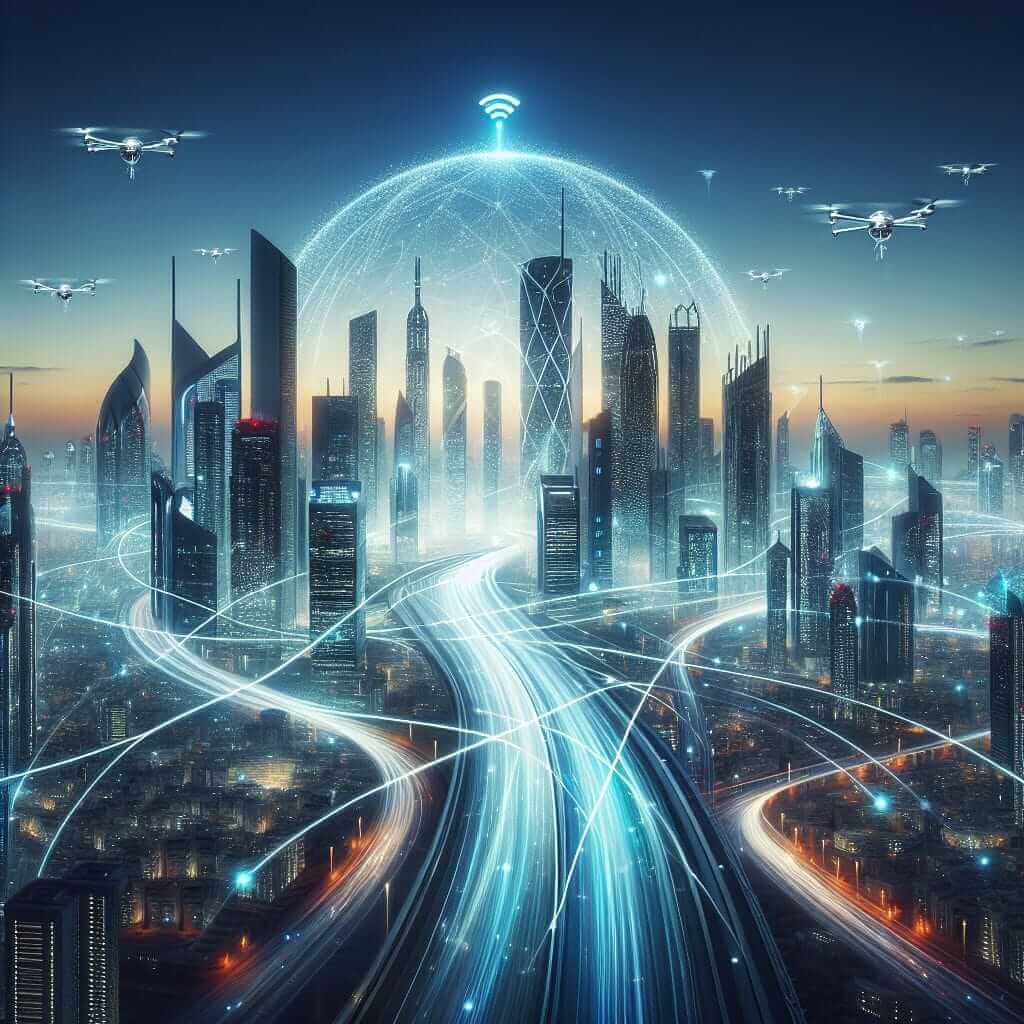The IELTS Reading section requires not only a good understanding of the English language but also an ability to analyze various topics critically. Recently, there has been increasing interest in topics related to technological advancements, such as 5G technology. Understanding how the development of 5G technology impacts global communication is a contemporary issue that bears relevance for IELTS candidates.
Table Of Contents
- Reading Passage: The Development of 5G Technology and its Impact on Global Communication
- The Text: Hard Text Level
- Questions: Hard Text Level
- Multiple Choice (Choose the correct letter, A, B, C, or D):
- Identifying Information (True/False/Not Given):
- Identifying Writer’s Views/Claims (Yes/No/Not Given):
- Answer Keys:
- Common Mistakes and Tips:
- Common Mistakes:
- Tips:
- Vocabulary:
- Grammar Highlight:
- Use of Relative Clauses:
- Conclusion
Given its timely significance, the topic of 5G technology may very well appear in the IELTS Reading test. This article will provide a comprehensive reading practice exercise, reflecting the structure of an actual IELTS exam. The goal is to help learners engage with a pertinent subject while employing effective test-taking strategies.
Reading Passage: The Development of 5G Technology and its Impact on Global Communication
The Text: Hard Text Level
The advent of 5G technology marks a significant milestone in global communication, promising unprecedented speeds, reduced latency, and enhanced connectivity. Unlike its predecessors, 5G is designed not just to augment mobile internet speeds but fundamentally to transform our connected world. Its projected impact spans various sectors including healthcare, transportation, and entertainment.
5G’s transformative potential is attributed to its architecture which includes several technological advancements. One notable feature is its use of higher frequency bands, which allows for greater data throughput. Additionally, technologies like Massive MIMO (Multiple Input Multiple Output) and beamforming enhance signal reliability and efficiency.
The ramifications of 5G technology in healthcare are particularly profound. Remote surgeries, supported by robotic instruments, can be performed with real-time precision, reducing the risk of complications. Moreover, telemedicine can become more widespread, providing high-definition video consultations that make healthcare more accessible in remote areas.
In the realm of transportation, 5G is expected to be the backbone of autonomous vehicles. High-speed, low-latency communication is crucial for vehicles to exchange information instantly, ensuring safe and efficient traffic management. This could significantly reduce accidents and improve road safety.
Entertainment and media consumption are also set to evolve dramatically with 5G. The capacity to stream ultra-high-definition (UHD) content without buffering, along with the emergence of virtual reality (VR) and augmented reality (AR) experiences, will redefine audience engagement.
Despite its benefits, the rollout of 5G technology is not without challenges. Infrastructure upgrades are necessary to support the new network, which involves significant financial investment. Issues related to cybersecurity and data privacy are also critical, as the increase in connected devices raises the potential for cyber threats.
In conclusion, 5G technology holds remarkable potential to reshape global communication profoundly. As it continues to develop, stakeholders must navigate the associated challenges to fully realize its benefits.
Questions: Hard Text Level
Multiple Choice (Choose the correct letter, A, B, C, or D):
-
What is one of the main features of 5G technology that distinguishes it from earlier generations?
A. Increased battery life
B. Higher frequency bands
C. Lower production costs
D. Simplified network architecture -
How does 5G technology potentially impact healthcare according to the passage?
A. It reduces the need for medical consultations.
B. It enables remote surgeries and high-definition telemedicine.
C. It standardizes surgical procedures.
D. It simplifies the diagnosis process.
Identifying Information (True/False/Not Given):
- 5G technology is expected to eliminate all road accidents.
- Infrastructure upgrades for 5G involve minimal financial investment.
Identifying Writer’s Views/Claims (Yes/No/Not Given):
- The writer believes that 5G technology will make virtual and augmented reality experiences more engaging.
- The writer asserts that 5G will entirely solve data privacy issues.
Answer Keys:
- B. Higher frequency bands
- B. It enables remote surgeries and high-definition telemedicine.
- False – The passage states that it can significantly reduce accidents, not eliminate them.
- False – It mentions that significant financial investment is required.
- Yes – The passage states that VR and AR experiences will redefine audience engagement.
- No – The passage highlights cybersecurity and data privacy as critical issues that need addressing.
Common Mistakes and Tips:
Common Mistakes:
- Misinterpreting information: Ensure you understand the context before choosing an answer.
- Overlooking details: Pay close attention to qualifying words like “significantly,” “reduce,” or “potentially.”
Tips:
- Skim the passage first to get a general idea.
- Highlight or note key points as you read.
- Practice time management to ensure you complete all questions within the given time frame.
Vocabulary:
- Transformative (adj.): /trænzˈfɔrmətɪv/ – causing a marked change.
- Latency (n.): /ˈleɪtənsi/ – delay before a transfer of data begins.
- Telemedicine (n.): /ˌtɛlɪˈmedɪsɪn/ – the remote diagnosis and treatment of patients.
Grammar Highlight:
Use of Relative Clauses:
- “Remote surgeries, supported by robotic instruments, can be performed with real-time precision…”
- This sentence uses a non-defining relative clause to add extra information about remote surgeries.
Conclusion
For IELTS Reading success, practicing with relevant and contemporary topics is crucial. The subject of 5G technology is not only timely but also rich in vocabulary and concepts that are likely to be tested. By engaging deeply with such materials, candidates can better prepare themselves for the actual exam.

Keep practicing, focus on understanding the passage, and utilize effective reading strategies to improve your IELTS Reading score!